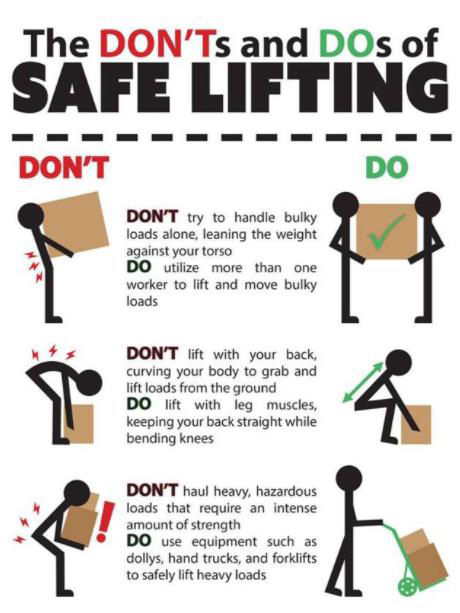How to avoid back injuries
|
- To be able to lift safely, you must lift properly therefore it is recommended to "bend your knees not your back," and "don't twist as you lift"
|
 |
Get as close to the object as possible
- The further the heavy object is from the centreline of your body, the greater the strain imposed on your back. If need be, squat down to lift the load and pull it between your legs. This gets it closer to the centre of your body and helps prevent the need to bend at the waist
- However, since your leg muscles are the largest muscles in your body, they are the biggest energy consumers. Repeated squatting can be very fatiguing, and reduces a person's ability to lift in this manner for any length of time. Avoid using fast, jerking motions when lifting
Avoid picking up heavy objects placed below your knees
- Try to see that heavy objects are placed and stored above knee level and below shoulder level
- If you suspect the load is too heavy to be lifted comfortably, do not take the risk. Use a mechanical aid, break the load down into its component parts, or get help
|
Tips for safe lifting
|
- Keep your back straight. This means don't bend at the waist when reaching to lift an object. Avoid bending and twisting at the same time. Keep the natural arch in your lower back, which distributes the load evenly over the surface of spinal disks, and is less stressful than if the disk is pinched between vertebras
- Tighten your stomach muscles. This technique helps prevent your spine from twisting. If you lift a load and need to place it off to one side, turn by moving your feet
- After repeated lifts, you might find yourself getting tired and forgetting to move your feet. You can overcome this tendency if the place you set the load down is at least one step away from where it is lifted
|
 |



